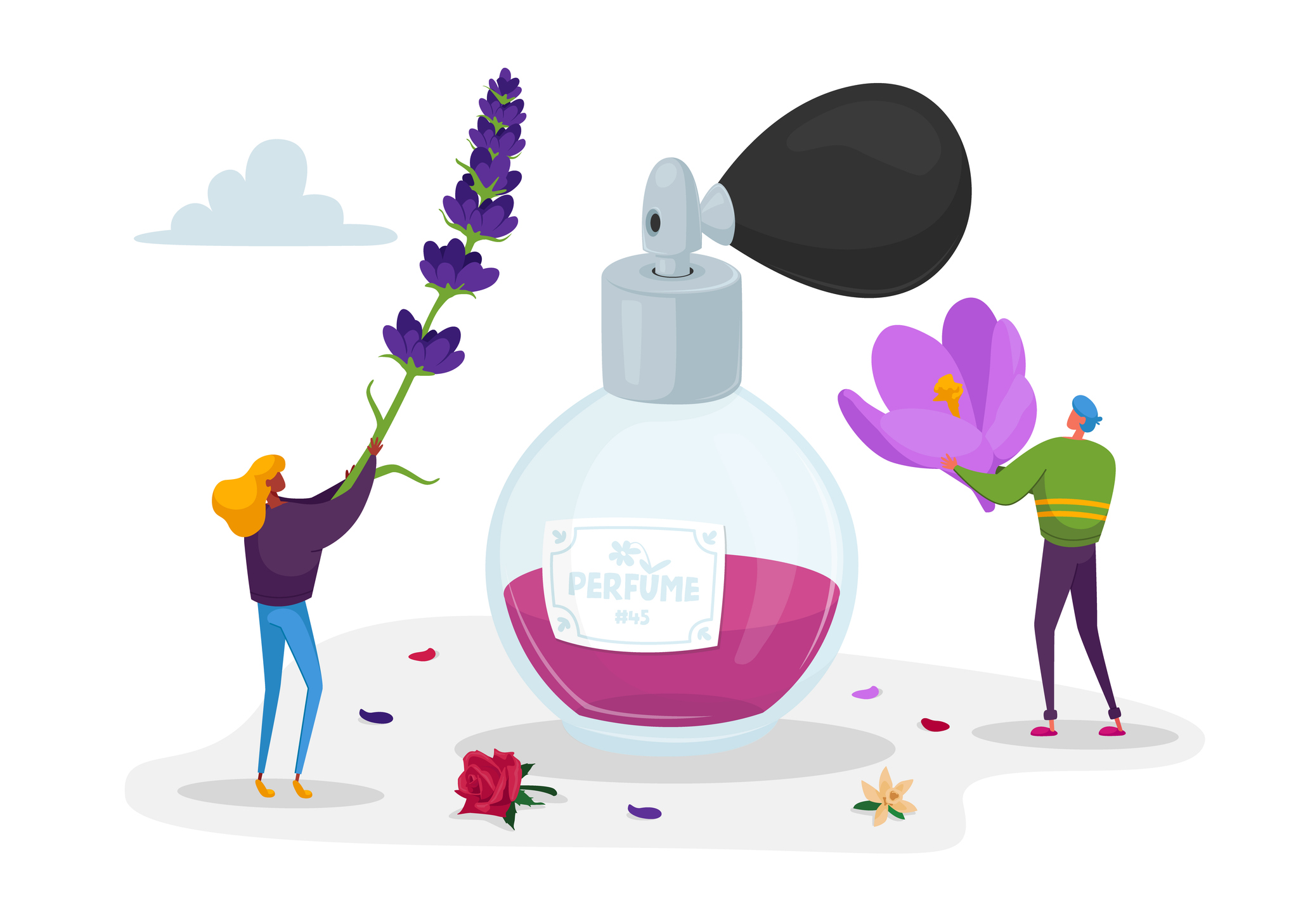
Natural essences or synthetic molecules?
It's a simple question! Is it possible to create a great perfume without integrating briefing notes?
Far from being the enemy of perfumery, synthetic molecules have made it possible to develop perfumery, make it more accessible, open up the field of possibilities for perfumers and give free rein to their creativity. Thanks to them, there are now more than 4,000 scents available, whereas a perfumer only has 400 to create a natural perfume...
What are synthetic molecules?
Synthetic chemistry makes it possible to reproduce or create a custom scent from synthetic compounds. Synthetic molecules can be "nature identical", i.e. molecules isolated or reproduced in the laboratory, but also found in nature. Among other things, this technique makes it possible to avoid the intensive exploitation of raw materials that are protected because they are threatened with extinction. But synthetic molecules can also be 'artificial', meaning that they have never been found in nature before. These include the green family, with its cut grass scents, some fruit scents that cannot be reproduced naturally, the marine/aquamarine family, the aldehydes that were very popular until the 2000s, and the musky family.
It was in petrochemical laboratories that researchers created scents that were impossible to reproduce, breathing new life into mute flowers such as lily of the valley, lilac, hyacinth and violet, and even offering marine notes with Calone, composed in the 1960s!
Will these molecules one day make it possible to invent new smells that nature has not created?
Who knows?
Natural fragrances
According to today's standards, a natural fragrance or fragrance of natural origin must contain at least 95% of natural ingredients. There are also 100% natural fragrances, meaning that they contain no synthetic products. If brands still choose to work with 100% natural materials, it's mainly out of ethical and ecological conviction. However, this virtuous approach suffers from a reduced range of fragrances and, curiously, some natural fragrances can be more allergenic than synthetic molecules.
The genesis of these molecules
Synthetic molecules in perfumery began to be developed on a large scale from the 19th century onwards. In 1868, the discovery of the coumarin molecule, which smells like freshly cut hay or light tobacco, marked the beginning of the use of artificial chemical compounds in perfumes. In the early 20th century, many other synthetic molecules were created, notably aldehydes such as the boldly fruity C-14 (1902) and ambroxan (1921).
Coumarin was introduced as early as 1889 in Guerlain's Jicky!
Aldehydes in Chanel N°5 in 1921
C14 combined with aldehydes and vanillin made Shalimar a success!
"In 1898, the art of the perfumer consisted mainly of preparing and mixing a relatively small number of substances. [...] Until the industrial creation of vanillin, heliotropin, coumarin and Baur musk, the formulas were very simple and would seem naive and, above all, lacking in variety to today's perfumer". Ernest Beaux (1881- 1961) creator of Chanel N°5.
Should these molecules be feared?
The International Fragrance Association was created to establish a code of good practice for fragrance products. IFRA is responsible for monitoring the materials used in the perfume industry. For several decades now, the ingredients contained in perfumes have been subject to very strict controls at European level to guarantee their safe use. Of the 2,000 or so new molecules that emerge from the laboratories every year, fewer than a dozen will actually be marketed, as the rigorous and expensive tests required to bring them to market are extremely stringent!
In addition, each time a fragrance is launched, manufacturers must provide the authorities with assessment dossiers. The safety of the fragrance is based on an analysis of the toxicological profile of the various ingredients. This analysis is carried out by independent laboratories in 4 stages: identification of the hazard, evaluation of the dose triggering a response (this is the stage at which the tests are carried out), evaluation of exposure (frequency and surface area of application, whether the product is rinsed or not, etc.), and finally characterisation of the risk.
The risks have clearly become infinitesimal.
What if synthetic molecules were virtuous?
For certain flowers that need to be protected because of their rarity, synthetic molecules can be reproduced in the laboratory in their "natural identical" form, making them a very interesting ecological alternative! Among other things, they make it possible to avoid the intensive exploitation of raw materials that are protected because they are threatened with extinction.
Protecting species by avoiding the intensive exploitation of certain raw materials also means protecting the animal kingdom. For example, animal musks from musk hogs and amber from sperm whales are banned by WWF. But these ingredients are essential in perfumery because, in addition to their olfactory qualities in the final notes, they act as fixers in the formulas.
What HAROLD & MAUDE think ...
Haven't the greatest perfumes that have marked 100 years of perfume history all been born from the symbiosis between natural essences and synthetic molecules? In order to create the best fragrances through exhilarating olfactory journeys, it was obvious thatHAROLD & MAUDE opts to create its own fragrances for this marriage of convenience!
The palette represented by this ensemble gives our perfumer-creator complete freedom in his creations, in optimum safety given the various legal tests carried out in independent laboratories.
The quality of a perfume should not be judged by the level of natural ingredients it contains, but by its selection of raw materials, some of which may be more precious than gold, such as ambrinol, which reproduces the scent of ambergris wonderfully and costs a 'small fortune'!
Perfumer-creator Edmond Roudnitska (1905-1996) said, "If nature is generous, synthesis is infinitely more so, and from its cornucopia it has brought thousands of products to perfumers.
Article written by Christian Paindavoine, Founder of HAROLD & MAUDE
Documentation: Nez La revue - Provence general circulation -
Harold & Maude 2024


